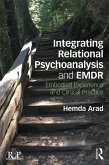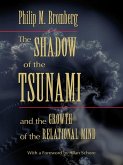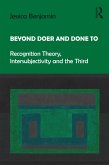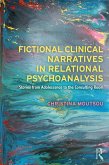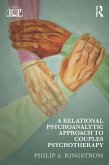Hemda Arad outlines the theoretical and clinical concepts that allow the integration of Relational Psychoanalysis with EMDR's unique contributions, specifically appreciating the neurological and embodied experience in an individual's development in relation to the classic talking cure's approach to dealing with "big T" trauma and with "small t" everyday attachment-related trauma. Arad describes a view of a modified EMDR approach capable of reaching many patients, beyond the trauma work for which it originally became known, in order to lend its more embodied approach to the advancement of the relational endeavor. Vivid clinical illustrations, chosen to elucidate theoretical concepts, make the complex theoretical ideas more accessible. The clinical portions illustrate a range of ways that EMDR and relational work, which may at first seem incompatible, may be integrated to help therapists navigate the two methods.
Integrating Relational Psychoanalysis and EMDR: Embodied Experience and Clinical Practice will appeal to psychoanalysts, psychoanalytic psychotherapists and psychodynamic therapists who wish to learn about the relational tradition in theory and practice or are seeking a way to integrate their work with other versatile approaches such as EMDR, as well as advanced students studying across these areas and EMDR clinicians who would like to broaden the scope of their skills.
Dieser Download kann aus rechtlichen Gründen nur mit Rechnungsadresse in A, B, BG, CY, CZ, D, DK, EW, E, FIN, F, GR, HR, H, IRL, I, LT, L, LR, M, NL, PL, P, R, S, SLO, SK ausgeliefert werden.
"This is a ground-breaking book which brings together two apparently disparate approaches to treatment - relational psychoanalysis and EMDR. Arad makes a distinction between analytic goals and therapeutic goals, arguing that at certain moments of emotional impasse, when words are not available to facilitate the process, EMDR can offer a different, bodily, avenue of approach. She observes that "The actual travel into thought, feeling, or pain during EMDR sets is dynamic in nature, and resembles a deep primary process in analysis." She finds this dual approach seems particularly useful for patients with dissociated self-states, in that, "EMDR helps ground [the patient] in a feeling state that otherwise is prohibited from entering her consciousness." Couples therapy might benefit especially from this integration, because Arad discovers that self-states can frequently shift between partners at times of conflict, creating an opening for EMDR strategies. In these ways Arad imaginatively challenges her readers to expand their therapeutic repertoires by bridging two approaches that at first glance might seem antithetical. This is a courageous and much needed text."-Robert Winer, MD, an editor of the book Who's Behind the Couch?: The Heart and Mind of the Psychoanalyst and the author of the book Close Encounters: A Relational View of the Therapeutic Process. Co-founder and co-chair of the program, New Directions: Writing with a Psychoanalytic Edge at the Washington Center for Psychoanalysis, member of the editorial advisory board of Psychiatry: Interpersonal and Biological Processes.
"Hemda Arad's book translates solid EMDR function to poetic analytic introspection in an extensive, comprehensive manner, including research, deep exploration of both techniques, and case histories that interweave them."-Robin Shapiro, LICSW, editor of EMDR Solutions, Pathways to Healing; EMDR Solutions II: Trauma Treatment Handbook; and author of Easy Ego State Interventions (Norton, 2016).



